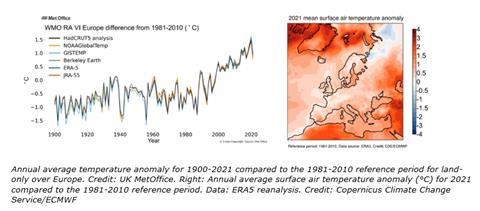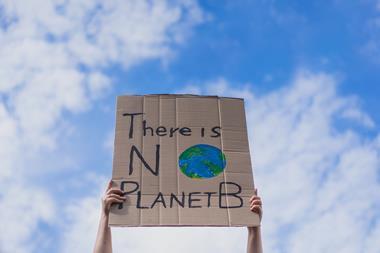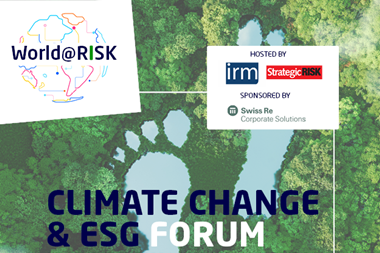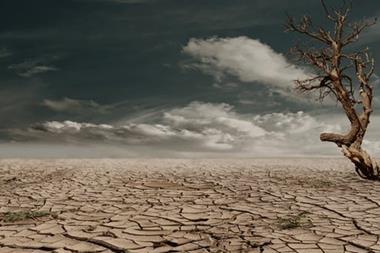Temperatures in Europe have increased at over twice the global average over the past 30 years - WMO
Temperatures in Europe have increased at more than twice the global average over the past 30 years – the highest of any continent in the world.
As the warming trend continues, exceptional heat, wildfires, floods and other climate change impacts will affect society, economies and ecosystems, according to a new report from the World Meteorological Organization (WMO).
“Europe presents a live picture of a warming world and reminds us that even well prepared societies are not safe from impacts of extreme weather events,” said WMO secretary-general Prof. Petteri Taalas.
”This year, like 2021, large parts of Europe have been affected by extensive heatwaves and drought, fuelling wildfires. In 2021, exceptional floods caused death and devastation.
“On the mitigation side, the good pace in reducing greenhouse gases emissions in the region should continue and ambition should be further increased. Europe can play a key role towards achieving a carbon neutral society by the middle of the century to meet the Paris Agreement,” he added.

Range of extremes
The State of the Climate in Europe report, produced jointly with the European Union’s Copernicus Climate Change Service, focused on 2021. It provides information on rising temperatures, land and marine heatwaves, extreme weather, changing precipitation patterns and retreating ice and snow.
Temperatures over Europe have warmed significantly over the 1991-2021 period, at an average rate of about +0.5 °C per decade.
As a result, Alpine glaciers lost 30 meters in ice thickness from 1997 to 2021. The Greenland ice sheet is melting and contributing to accelerating sea level rise. In summer 2021, Greenland saw a melt event and the first-ever recorded rainfall at its highest point, Summit station.
In 2021, high impact weather and climate events led to hundreds of fatalities, directly affected more than half a million people and caused economic damages exceeding $50 billion. About 84% of the events were floods or storms.
Journey to Net Zero
In the European Union (EU) greenhouse gas emissions decreased 31% between 1990 and 2020, with a net 55% reduction target for 2030.
Europe is also one of the most advanced regions in cross-border cooperation in climate change adaptation, and in providing effective early warning systems. Heat-health action plans have saved many lives from extreme heat.
“European society is vulnerable to climate variability and change, but Europe is also at the forefront of the international effort to mitigate climate change and to develop innovative solutions to adapt to the new climate Europeans will have to live with,” said Dr Carlo Buontempo, director, Copernicus Climate Change Service, European Centre of Medium-range Weather Forecasts (ECMWF).
“As the risks and impact of climate change become increasingly apparent in day-to-day life, the need and the appetite grow for climate intelligence, and rightly so. With this report we aim to bridge the gap between the data and the analysis to provide science-based but accessible information that is ‘decision-ready’, across sectors, across professions,” he added.
The State of the Climate in Europe report was presented at a regional conference of directors of European national meteorological and hydrological services.
The report and an accompanying storymap includes input from national meteorological and hydrological services, climate experts, regional bodies and UN partner agencies. It was issued ahead of the annual UN Climate Change negotiations, COP27, in Sharm-El Sheikh.
World@RISK: ESG & climate Change Forum 2022 - new speakers announced for 15 November
- 1
- 2
- 3
 Currently reading
Currently readingCOP27: Time to confront a warming Europe
- 4
- 5
- 6
- 7
- 8
- 9
- 10
- 11
- 12
- 13
- 14
- 15
- 16
- 17
- 18




































No comments yet